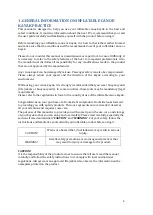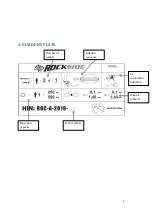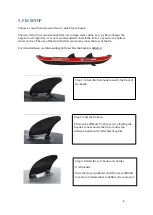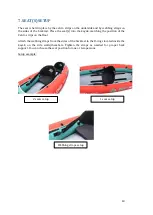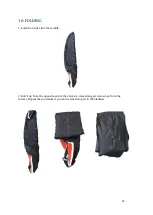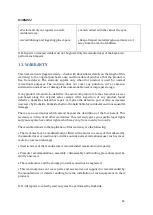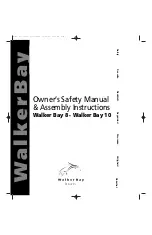
13
11. STORAGE
When storing your inflatable kayak, keep it in a clean and dry place that is unaffected by
significant temperature variations or other damaging factors. You can store it deflated
and folded in its bag, or setup and slightly inflated.
Keep it away from rodents: they could put holes in the kayak tubes.
WARNING!
Whenever you take your kayak out of the water and deflate it, allow time for it to air out
and dry. Neither the skin/hull or the inside chambers will suffer from water damage, but
stagnant water could cause mildew and foul odor. Open the zippers to evacuate water
and allow the different elements to dry out.
12. HOW TO REPAIR SMALL PUNCTURES
You can repair small punctures using the material provided in your repair kit (Note: glue
is not supplied with models intended for the U.S.A.). To carry out a repair in optimal
conditions, the hygrometric degree must be less than 60% and the temperature must be
between 18°C / 25°C. Avoid repairing in rain or sunlight.
To remove a tube, open the zipper on the cover inside the canoe/kayak. Each tube has a
zipper at the front and rear for quick and easy access. Check that the inner tube is
completely deflated and laid flat.
1- Prepare a round patch and cut it with no less than 2 inches or 5 centimeters in
diameter excessing the area where the patch is to be applied. You can draw the shape of
the patch on the tube where the leak is to be repaired.
2- Clean the patch and the area surrounding the leak with Alcohol.
Let it dry about 5 min.
3- Apply 3 thin, even coats of repair kit adhesive to both the surface of the kayak and the
patch. Wait 5 minutes between each coat.
4- After the 3rd coat, apply the patch on the defect surface. Use a hand roller to apply the
patch evenly. Pay special attention to the edges. Clean the excess glue with a solvent.
Wait 12 hours for it to dry out.



